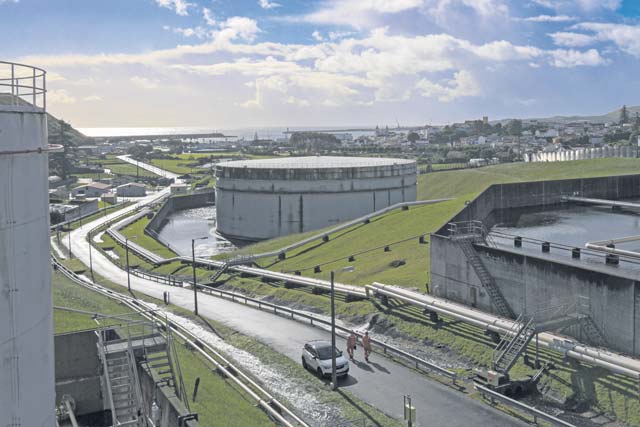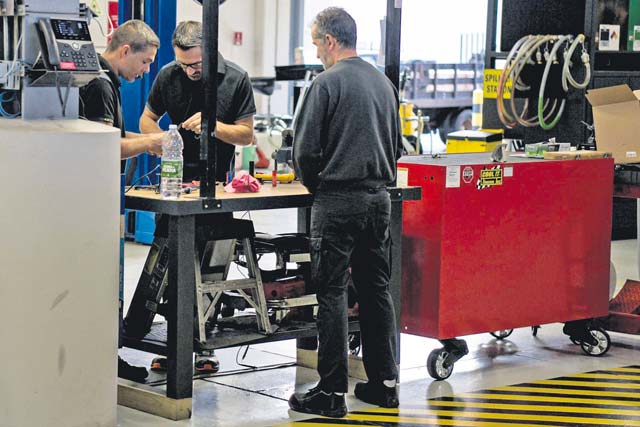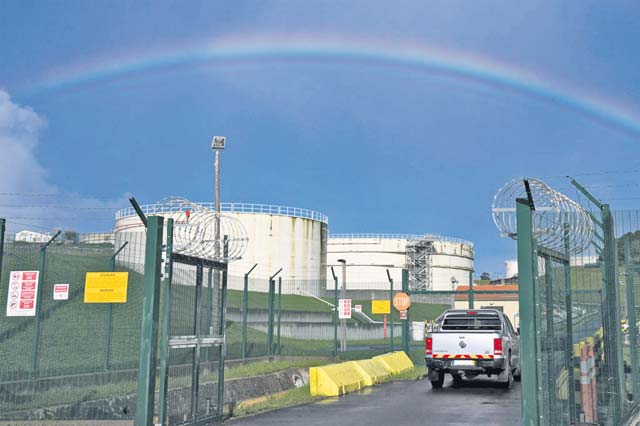
Nestled quietly amongst the volcanic islands of the Azores Archipelago lies the island of Terceira, home to the 65th Air Base Group, Lajes Field Air Base, which is hosted on the Portuguese Air Base 4. The location of this hidden gem offers unique capabilities for the United States and allied and partner nations.
“The 65th ABG enables power projection,” said U.S. Air Force Lt. Col. Shawn Littleton, 65th ABG deputy commander. “Our personnel, both military and local national, support the expeditionary movement of war fighters, warplanes, and global communications to Combatant Commanders supporting joint, coalition, and NATO operations, which extends and amplifies operational reach.”
The 65th ABG is one of the 86th Airlift Wing’s geographically separated units from Ramstein Air Base and is comprised of four squadrons in both Portugal and Spain. The group plays a vital role in enabling power projection.

“To execute this mission, we must remember the world and its threats are changing,” said Col. Brian Hardeman, 65th Air Base Group commander. “What worked in the past may not in its entirety work for us today as our threats continue to evolve. We must change to stay ahead of those who challenge us.”
The group is strategically located to play a vital role in operations by serving as a trans-Atlantic bridge for the Department of Defense, allied nations, and other authorized aircraft. The relationship built with the Portuguese is critical to enable this important mission.
“It really is a joint effort between the Portuguese and the United States,” said Master Sgt. Drake Burch, 65th Logistics Readiness Squadron senior enlisted leader. “Lajes is rare in that many sections on the base are worked jointly with both the Portuguese air force and the U.S. Air Force. The air traffic control tower, for example, always has a member from both forces working together at all times.”

The search and rescue mission conducted by the Portuguese Air Force is a true testament to joint operability, said Drake. The 65th ABG is the sole provider of fuel for the mission. This is no small task for the team as the POAF runs rescue missions 24/7. They average saving about 1.5 lives a day.
Lajes Field holds 48 percent of the U.S. Air Forces in Europe’s fuel supply, which is shipped in using the U.S. Air Force’s only military pier, another unique capability located on the island. Here, fuel tankers are offloaded, processed and stored. The fuel storage tanks have the capability of holding 38 million gallons of fuel, making it the largest fuel storage location in USAFE.
The location, which operates as a secure location outside of the mainland for power projection, also offers the largest ramp space in USAFE, which supports the assistance of transient aircraft and serves as a shock absorber for potential high-intensity conflict.
“We support expeditionary forces as a strategically located checkpoint, executing all mission-essential requirements,” said Lt. Col. Andrew Standeford, 65th Air Base Squadron commander. “Our personnel provide critical ground maintenance support to multiple aircraft, from bombers and fighters to tankers and cargo.”
Lajes Field Airmen also support an important communication relay mission, which provides satellite downlink coverage of the Mid-Atlantic Gap and protects, extends and amplifies operational reach for the United States and allied and partner nations.
“We control the long-range low wave communication system here for the Air Force Nuclear Command, Control and Communications mission,” said Standeford. “We are one of 13 sites throughout the world providing that coverage over the North Atlantic that none of the other sites can.”
Though the mission has evolved since the United States military arrived at Lajes Field after World War II, the base continues to be an important strategic location.
“With changes to the strategic environment, Lajes Field contributes credible deterrence,” said Littleton. “We continue to ensure our assets and capabilities support today’s fight and are reposturing to stay ahead of the adversarial competition of tomorrow.”


